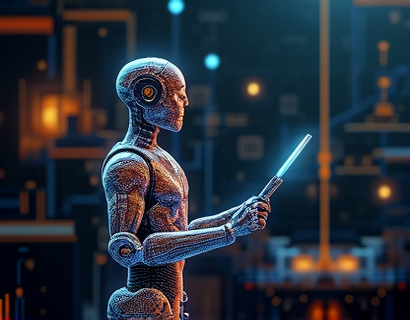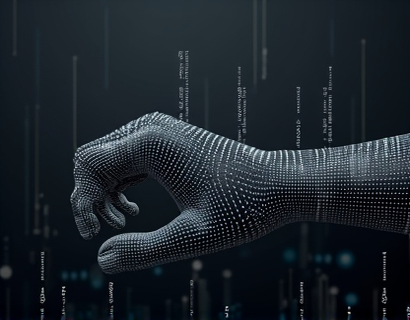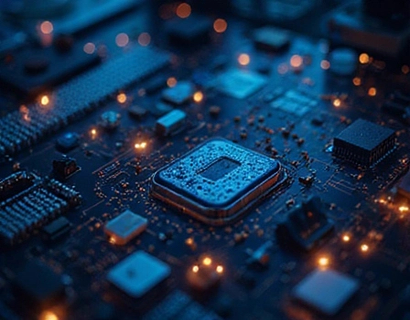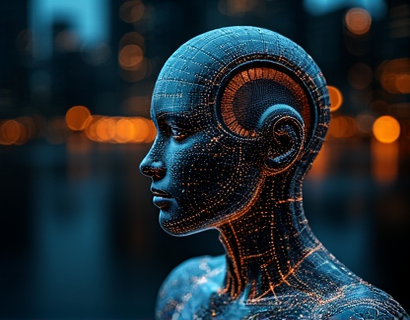Elevating Digital Engagement: The Synergy of Crypto and AI
The intersection of cryptocurrency and artificial intelligence (AI) is creating unprecedented opportunities for tech innovators and early adopters. This convergence is not just about combining two cutting-edge technologies; it's about revolutionizing how we interact with digital content, enhancing online experiences, and streamlining access to advanced applications. For those at the forefront of technological advancements, understanding and leveraging this synergy can significantly elevate their digital presence and open new avenues for innovation.
Understanding the Basics: Crypto and AI
To fully appreciate the potential of crypto and AI, it's essential to grasp the fundamentals of each technology. Cryptocurrency, often referred to as digital or virtual currency, uses cryptography for security and operates on a decentralized network, typically a blockchain. This decentralized nature ensures transparency, security, and reduces the need for intermediaries.
Artificial intelligence, on the other hand, involves the simulation of human intelligence processes by machines, particularly computer systems. These processes include learning (the acquisition of information and rules for using it), reasoning (using rules to reach approximate or definite conclusions), and self-correction. AI can operate autonomously or be integrated into existing systems to enhance their functionality.
The combination of these two technologies creates a powerful toolset for developers and businesses. Crypto provides a secure and transparent way to conduct transactions and store value, while AI offers advanced analytics, automation, and personalized experiences. Together, they can transform digital engagement in numerous ways.
Enhancing Online Presence through Crypto and AI
For tech innovators and early adopters, leveraging the synergy of crypto and AI can significantly enhance their online presence. One of the primary ways is through decentralized platforms that utilize blockchain technology. These platforms offer a more secure and transparent way to interact with users, build communities, and manage digital assets.
Decentralized applications (dApps) are a prime example. Unlike traditional applications hosted on centralized servers, dApps run on a blockchain network, ensuring that data is distributed and not controlled by a single entity. This not only enhances security but also builds trust among users. AI can further optimize these applications by providing insights from user behavior, predicting trends, and automating routine tasks.
Another area where crypto and AI intersect is in digital identity verification. Traditional methods often involve centralized databases, making them vulnerable to breaches and fraud. By using blockchain for storing identity data and AI for verifying and authenticating identities, users can have a more secure and seamless online experience. This is particularly crucial for financial transactions, access control, and personalized services.
Streamlining Access to Advanced Applications
The integration of crypto and AI can also streamline access to cutting-edge applications. One innovative approach is through tokenized access models. By issuing tokens that represent access rights to specific services or content, platforms can offer flexible and scalable subscription models. AI can optimize these models by analyzing user preferences and behavior to recommend the most suitable tokens and services.
For instance, a content platform could use AI to analyze user engagement and tailor content recommendations based on individual interests. Tokens could then be used to unlock premium content or exclusive features, creating a more engaging and personalized user experience. This model not only enhances user satisfaction but also provides a new revenue stream for content creators and platform owners.
Moreover, AI-driven chatbots and virtual assistants can be powered by blockchain to ensure data privacy and security. These AI entities can handle customer support, guide users through complex processes, and provide real-time assistance, all while maintaining the integrity and transparency of the blockchain network.
Innovative Use Cases: Crypto and AI in Action
Several innovative use cases demonstrate the potential of combining crypto and AI. One notable example is in the field of decentralized finance (DeFi). DeFi platforms leverage blockchain for financial services such as lending, borrowing, and trading, all without traditional financial intermediaries. AI can enhance these platforms by providing sophisticated risk assessment tools, automated trading bots, and personalized financial advice.
Another exciting application is in the realm of digital art and collectibles. Non-fungible tokens (NFTs) have gained significant traction, allowing artists to sell unique digital assets with provenance and ownership verified on the blockchain. AI can be used to create unique and dynamic NFTs, generate art based on user preferences, and even authenticate and verify the authenticity of digital artworks.
In the gaming industry, crypto and AI can create immersive and economically viable gaming experiences. Blockchain-based gaming platforms can reward players with tokens for participating in games, completing tasks, and contributing to the community. AI can enhance gameplay by creating adaptive difficulty levels, generating dynamic content, and providing personalized gaming experiences.
Challenges and Considerations
While the potential of crypto and AI is vast, there are several challenges and considerations that tech innovators and early adopters should be aware of. Regulatory uncertainty remains a significant hurdle, as governments worldwide are still grappling with how to regulate these emerging technologies. Compliance with existing laws and anticipation of new regulations are crucial for any project involving crypto and AI.
Technical complexity is another factor. Integrating blockchain and AI requires a deep understanding of both technologies, which can be daunting for those without a strong technical background. Collaboration with experts and leveraging existing frameworks and tools can help mitigate this challenge.
Scalability is also a critical consideration. While blockchain technology offers many benefits, it can face limitations in terms of transaction speed and cost. AI models, especially those requiring extensive data processing, can be resource-intensive. Solutions such as layer 2 protocols for blockchain and optimized AI algorithms can help address these issues.
Future Outlook: The Path Forward
The future of crypto and AI is bright, with continuous advancements promising even more innovative applications. As the technology matures, we can expect to see more seamless integrations, improved user experiences, and broader adoption across various industries.
For tech innovators and early adopters, staying informed and adaptable is key. Engaging with the community, participating in research and development, and experimenting with new use cases will help them stay ahead of the curve. The convergence of crypto and AI is not just a trend but a transformative force that will shape the digital landscape for years to come.
By embracing this synergy, individuals and organizations can unlock new possibilities, enhance their digital presence, and contribute to a more secure, transparent, and innovative online world.










































